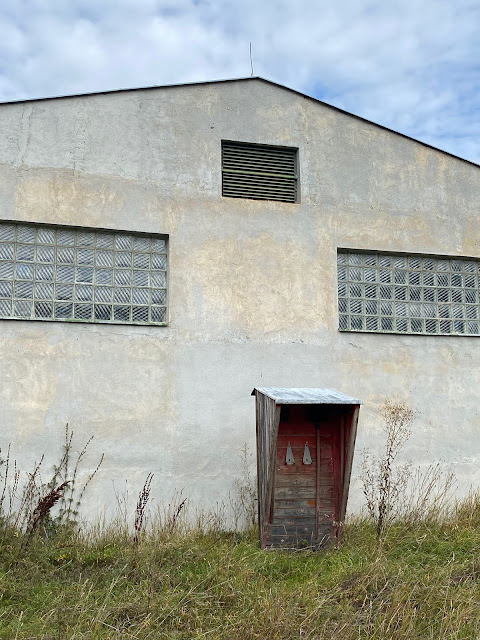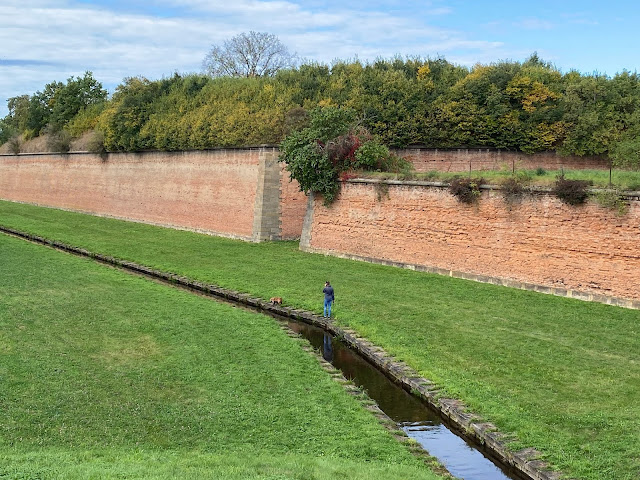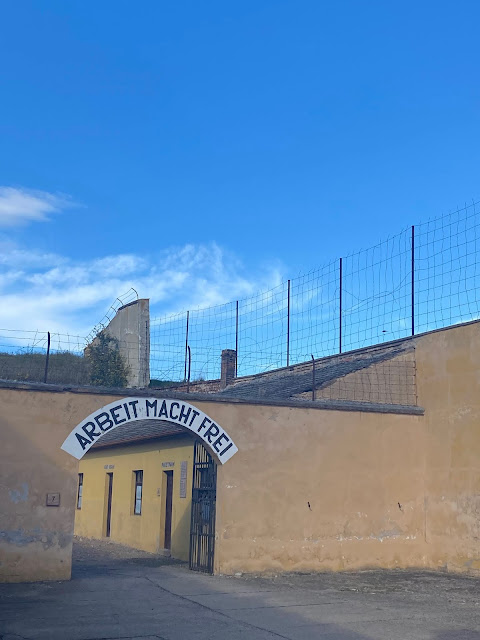A memorial in Prague's main train station for Czech children who disappeared during the Holocaust primed my emotions for a trip to Terezin, a "model" concentration camp the Nazis called Theresienstadt.
Although many, many Jews died at Terezin, it wasn't a death camp per se. The ghetto was a kind of limbo, a way station between propaganda and exploitation on one side, and the Final Solution at places like Auschwitz on the other. I encountered the rear of the Crematoria first. Disease, torture and malnutrition killed most people, many of whom were children or the elderly.
The train I took used to go right into Terezin, a former military fortress. It also passed the Columbarium, where deceased residents were once buried in wood coffins, then in cardboard urns as their number increased.
Terezin residents could visit only the Columbarium tunnel, not the individual urns, but never on the Sabbath.
Nazis added this decorative urn here to convince a foreign delegation they respected the dead, inscribing the base with a Biblical quote:
“And the Lord God will wipe away tears from all faces..."
This was actually my first visit to a concentration camp memorial, although Florian and I were able to explore the grounds at Buchenwald.
Seeing the actual names of the individuals who perished makes a difference.
These are just a few of the 15,000 children.
Identification encourages empathy. I saw myself in this young Jew, who kept a journal in both Czech and Hebrew.
His November 1943 entry describes being assembled for a headcount. It reminded me of AIDS-related entries I wrote during the 80s, when you know history is happening to you.
Two thousand people still live in Terezin. Life goes on for this dog walker chatting on her cellphone. Creepy.
Rick Steves oriented me to Terezin, asking his guidebook readers to imagine this town square, tented, with Jews performing forced labor. It made me shiver on a warm, sunny day.
The Ghetto Museum does a terrific, comprehensive job helping visitors understand what nearly 140,000 prisoners faced in Terezin. Although the majority were from the Czech Republic and Germany, Jews arrived from other European countries, too.
So many yellow stars.
Looking at this recreation of Terezin living conditions in the Magdeburg Barracks proves that human beings can adapt to anything.
What makes Terezin different from many concentration camps is the large trove of art that prisoners left behind.
The architects of the Final Solution acclimated the residents of Terezin to gang showers so they wouldn't resist when the Nazis herded them into gas chambers upon arrival at the death camps.
87,000 people had to get back on the box cars after imprisonment at Terezin, for deportation to the death camps.
A young man kisses his girlfriend goodbye.
The Nazis isolated Czech political prisoners, including Christians, at the Small Fortress across the Ohre River, a tributary of the Elbe.
"Work will set you free."
The Nazis built this bank of sinks and mirrors to assure the foreign delegation that prisoners had access to adequate hygiene. But water never poured from the faucets due to the absence of actual plumbing.
Prisoners carried water in buckets, for washing uniforms and floors.
This is what the Nazis wanted the world to believe about conditions at Terezin.
This is what the liberators found in "the city the Fuhrer gave to the Jews." And these guys were the lucky ones!
A beautiful National Cemetery outside the Small Fortress tells the real story, albeit on a much smaller scale.
The remains of fewer than 3,000 Terezin residents and political prisoners are buried here. When the war finally turned against the Nazis, they tried to cover up evidence of their atrocity by dumping the ashes of more than 20,000 people, mostly Jews, into the Ohre River.
An exhibit at the Small Fortress shows how some artists have grappled with the Nazi legacy.



































No comments:
Post a Comment